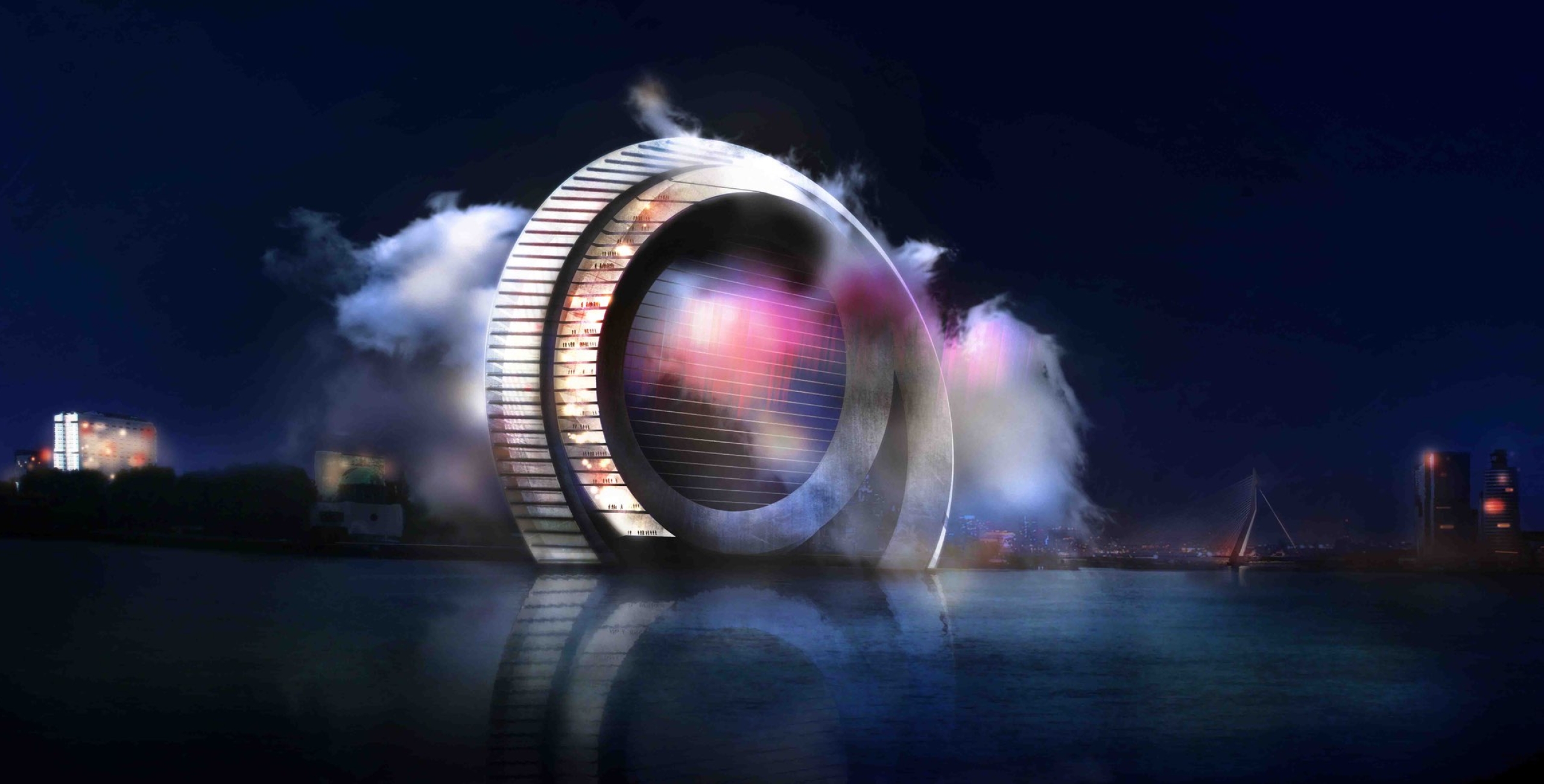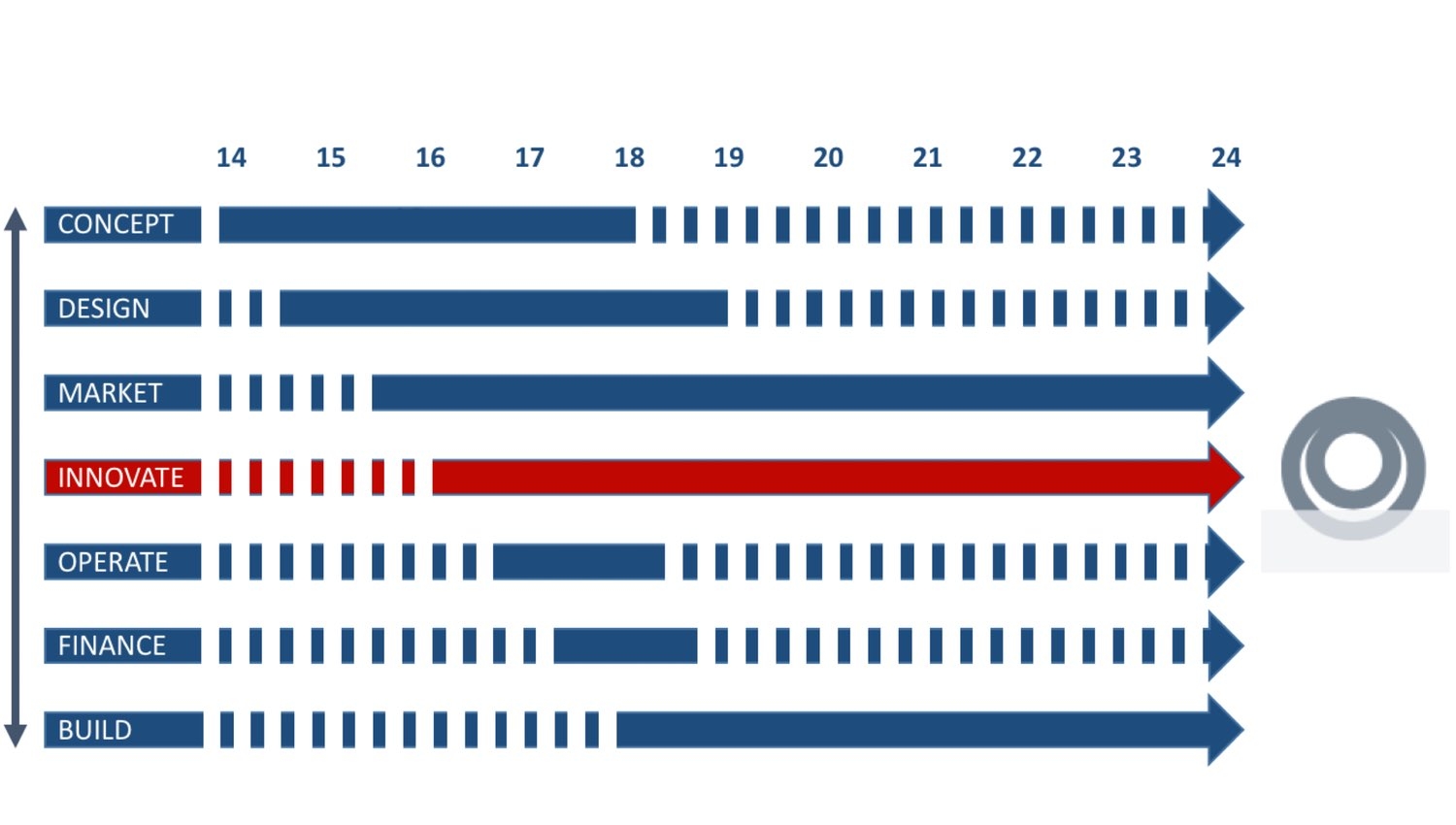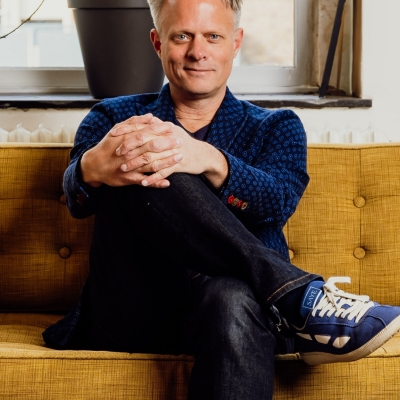A silent revolution
How BLOC's next-generation guerrilla-initiative defies the laws of construction and development.
he Dutch Windwheel should be gracing the Rotterdam skyline by 2025. This 174-metre circular structure includes a hotel, homes and a Ferris wheel of sorts, and also generates energy. The totally disruptive building, with its unprecedented form and combination of functions, has gained international attention. But its ultimate purpose is to revolutionise the world of construction and development.Design: Windwheel Corp / DoepelStrijkers, Rotterdam

Huge ambition
The inner ring of the Windwheel contains the hotel and apartments, while in the outer one forty capsules revolve on a wheel, giving visitors a spectacular view. It also converts wind energy into electricity without moving parts. It will become a showcase for climate architecture and smart city development, setting new standards in the field of sustainable construction.
The project’s ambition is huge, and it speaks to the international imagination. It has featured in publications all over the world, including the Daily Mail, the Guardian, Der Spiegel, Forbes and Business Insider, and was selected as the most sustainable idea in a poll by the Spanish newspaper 20 Minutos. Several items about the Dutch Windwheel have appeared on Discovery Channel and the Chinese channel CNC has even devoted a few minutes of the news to it. International developers and financiers have inquired whether Windwheels – or buildings based on the same principles – can be developed in other cities.
Game changer: this Dutch Windwheel is part green tech show case, part architectural attraction
(Smithsonian Magazine)
In the Netherlands, the Dutch Windwheel is only just beginning to receive attention. An innovation consortium comprising AM, Royal BAM Group, Deltares, Dura Vermeer, Evides, ECN, Eneco, Huawei, Innovation Quarter, Mammoth, Siemens, SPIE, TNO, and the Windwheel Corporation will work in consultation with local, regional and national governments to come up with the innovations that will make the Dutch Windwheel and its surroundings so special. Even now, real innovation is taking place in the process underlying this development. Its key elements are (1) function-independent thinking, 2) the leading position of technology in the process, (3) the shift from thinking in bricks to thinking in services and (4) responding to the new role of government.
1. Function independent thinking
The design has not yet been fully developed, and that is intentional. The main reason is that it is still completely unclear what the world will look like in 2025, let alone 2035 or 2045. We can only guess whether the Windwheel should contain mostly offices or homes, and what requirements they will have to comply with. For this reason, the building will be completely changeable, so that it can alter its function depending on the market. Structurally, this is a puzzle, and regulations will also need to be adapted to make this possible.
2. Technology is leading
The windwheel will have its own smart data infrastructure, with software that can be updated after its completion. But this also applies to the hardware: when better and more sustainable materials and technology become available, such as glass that generates power, the building must be able to adapt to it. It will be a dynamic structure that improves with time, like a Tesla, which gradually evolves into a better car. The development of the Dutch Windwheel will be led by infinite technological possibilities.
3. From bricks to services
A dynamic, flexibly programmable building will require a departure from the long-term operating contracts still used in construction, with thirty years being not unusual. Thirty years ago we were still in the previous cold war, a wall still divided East and West Berlin and Final Countdown was at the top of the charts. With technological opportunities growing exponentially, it is impossible to imagine what the world will look like in thirty years. The operation of the Dutch Windwheel should therefore be based on a coherent system of flexible services, not on bricks and other materials.
4. The different role of the Government
Unusually, the development of the Dutch Windwheel is not led by public-sector demand. The government did not ask for quotes, and the answers offered by the project are difficult to capture in a pre-formulated question. It is a form of guerrilla development that just happens to happen to governments, and at the same time suits them very well. The project’s objectives fit seamlessly with the aspirations of the public and private sectors, and the private organizations that commit themselves to it are a very welcome network. The government is not the client: its role is more that of a facilitator.
Schematic representation development process Dutch Windwheel

The Dutch Windwheel breaks with the laws of the construction process, which in recent decades have been based on the principle of Design, Build, Finance, Maintain/Operate. Its operation and financing will be highly innovative, requiring courage by the parties involved, who should be prepared to suspend questions like “Who is the client?” and “Who is paying for all this?” for a while. It also requires flexibility from governments, operators, investors and constructors. In the world of construction, where “partial tender” has been one of the largest process innovations of recent years, that is a big challenge. And it is a necessary condition for the creation of the Dutch Windwheel.
Only a totally disruptive process will ultimately lead to the revolutionary development the organizations involved intend.

